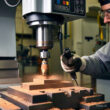Dr. Henry Heimlich’s latest maneuver — a controversial AIDS “cure”— has many medical ethicists gagging.
If you have ever found yourself gasping for air and suddenly been bear-hugged from behind by a waiter, his fist, placed just below your sternum, dislodging the food blocking your trachea with one miraculous thrust, you owe the waiter a large tip—but you owe your life to Dr. Henry Heimlich. He’s the maneuver man, credited for three decades as the inventor of the simple, anyone-can-do-it technique for saving the lives of dinner companions who have just begun pointing furiously at their throats while turning blue.
Like most legends Heimlich—a onetime Manhattan society doctor turned medical inventor and gadfly—has his detractors. Many of them are white-coat colleagues openly dismissive of such Heimlich notions as using the maneuver to save people who are drowning and curing AIDS patients by injecting them with malaria.
But none of those naysayers has been as determined to knock Heimlich off his pedestal as the man who first identified himself to me over the phone, in the summer of 2004, as Holly Martins. Dr. Heimlich, he told me impatiently, is a scam artist, promoting crackpot theories and stealing credit for other doctors’ inventions. The word Martins used to describe Heimlich’s career was fraud, and he said he had the evidence to prove it.
Holly Martins is not his real name; it comes from the Joseph Cotten character in the noir classic The Third Man. It is odd to use a fake name to expose a fraud, as Martins would concede in later conversations. But he was convinced it was the only way to elicit the truth from all the colleagues Henry Heimlich had burned over the years. For surely they would have left out the most sordid details had Martins used his real name, which is Peter Heimlich.
“You tell me how I’m supposed to call a doctor and say, ‘Hi, I’m the son of Henry Heimlich, the scourge of your life. Would you tell me the truth about him?”
He then went on to reveal who really invented the Heimlich maneuver. And it wasn’t long before my own investigation of Dr. Henry Heimlich uncovered ongoing unsupervised experiments with AIDS patients in Africa and China that Peter Lurie, one of the country’s leading medical ethicists, says are “absolutely outrageous and could be the difference between life and death.” Dr. Heimlich’s methodology proved so difficult to verify, let alone justify, that his own research director at the Heimlich Institute in Cincinnati warned him about criticism from the medical establishment and called for better cooperation with local medical review boards. Heimlich’s Trumpian response: “You’re fired!”
Peter Heimlich and his wife Karen Shulman live in a high-ceilinged French provincial house outside New Orleans where the sun pours in like syrup on a sultry midsummer day. On the July morning when I first visit them, more than a month before the devastation that would be wrought by hurricane Katrina, they have thrown open the doors to catch a Louisiana breeze in lieu of air conditioning, tropical storm Cindy having knocked out the power the night before. Peter, a lean and whiplike six-foot-four, is padding around barefoot, made restless by the sudden lack of telephone or internet access to the world. Karen is the more cautious, analytical half of the couple, not as emotionally attached to the mission as Peter but every bit as fascinated. They’ve spent the last four years obsessed with taking down Peter’s father.
For the first 48 years of his life Peter distanced himself from his father’s career and celebrity. A year or two might slip by between calls from his parents. But in 2001, Peter says, he learned of serious health problems in his family. He refuses to say what those problems were, but he insists he was appalled to learn that his father was refusing to address them.
“My father’s the great Dr. Lifesaver,” Peter says bitterly. “How could he have let this happen?” When he tried to get the facts, he says, his father hung up on him and his mother wouldn’t respond to his letters.
Peter and Karen began to wonder whether there were other family secrets worth looking into as well. At first glance Peter Heimlich is not an obvious choice for sleuthing around in medical archives; his life has included stints as a musician and as a successful businessman. But there may well be no one better prepared to solve the mystery of his father. “I speak Heimlich,” he says. “To understand Henry you have to see behind a kind of curtain, because his methods are unconventional and his goals seem to be…” He searches for the right word. “Irrational. I don’t think the medical field had ever seen anyone quite like him. The Henry Heimlich story is so improbable and confusing and puzzling and challenging. It’s like a Zen puzzle.”
A small corner study across the hall from Peter and Karen’s bedroom is the nerve center of their campaign. From their computer they control the website heimlichinstitute.com, which was deliberately named so as to compete for web traffic with Dr. Heimlich’s site, heimlichinstitute.org. (Dr. Heimlich’s lawyers recently succeeded in forcing Peter to change the website’s name. He went with “medfraud.info.”) The site has revealed many Heimlich secrets to anyone with internet access. Peter works the phone while Karen stands nearby, jotting notes to remind him to broach an important subject with whoever is on the line.
Peter had never known his father to have an unconventional mind, to be a tinkerer who followed creative impulses, so when the term Heimlich maneuver first entered the lexicon in the late 1970s Peter was astonished. He was living in California, writing songs and playing in rock clubs, hoping for a break. From time to time Henry would mail him an envelope thick with articles touting the Heimlich name and this new invention. Peter tossed the stories, unread, into a file folder.
Eventually he scrapped his musical ambitions and turned to less stimulating but more lucrative work, headhunting in Silicon Valley, then starting up a fabric import business with Karen. Peter says that his efforts to reach out to family members were rejected (and that he has the letters to prove it). So when his parents stopped responding to his questions, he began looking elsewhere for answers. The first place he turned was the file of articles that Henry had mailed him over the years. The more Peter read, the murkier it all became. In one article Henry tells an interviewer that Peter had submitted scripts for The Twilight Zone, which was false. “It was like, ‘Oh my God, he just made it up!’?”
Strangest of all was the frequent appearance of a vaguely familiar name: Dr. Edward Patrick. Peter had remembered Patrick visiting the family home in Cincinnati in the early ’70s, but Patrick had always been introduced as an electrical engineering professor, not as an M.D., much less as Henry’s research colleague. At home Henry had often spoken of his many career ventures, and his failure to mention Patrick was, to Peter’s thinking, “conspicuous by its absence.” So how to explain Patrick’s presence in all those articles?
“For us, it was like the beginning of Blue Velvet, when the guy finds the ear and it leads him down this rabbit hole into a nightmare world,” says Peter. He and Karen befriended librarians and hospital records clerks, mastered the PubMed medical database, and learned how to navigate public records law. “Karen’s joke,” says Peter, “is that I got to know my father through the Freedom of Information Act.”
I was working at an alternative newsweekly in Cleveland when Holly Martins first contacted me. That conversation led me to call Dr. Patrick to get his account of the invention of the Heimlich maneuver. Patrick explained in painstaking detail how he, as an electrical engineer, had first applied engineering concepts to the problem of choking. He had a harder time describing what Henry Heimlich had contributed, but Patrick compared their partnership to that of the Wright brothers.
Whoever had the original idea, Heimlich, who declined all requests to be interviewed for this article, deserves credit for his marketing skills. He had a way with the media; in the late ’70s and early ’80s he attracted widespread coverage of the Heimlich maneuver—while accusing the Red Cross of risking lives by refusing to recommend it over the application of back blows, which was then the standard intervention for choking victims. His point was neatly driven home by slogans such as “back blows are death blows.”
“He was able to tailor his message to what reporters wanted to hear,” says Peter. “The image of the underdog, the maverick, the David vs. Goliath of medical bureaucracy, was a compelling story.”



